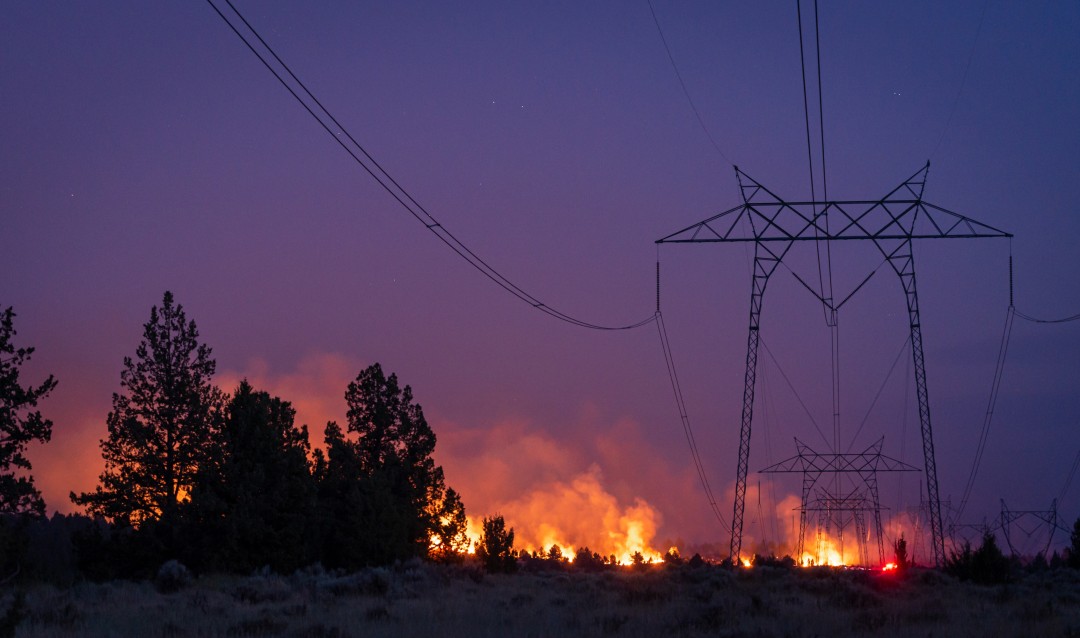Spanning long distances across variable terrains, electric power systems can spark wildfires in the event of dry weather and high winds. This may occur when conductor cables oscillate in such a way to become close to the surrounding vegetation.
Data from the California Department of Forestry and Fire Protection shows that between 2016 and 2020, at least five of the top 20 most destructive California wildfires started from power systems. Paired with the extreme weather conditions and nearby vegetation, power system-ignited incidents are more likely to develop into large, intense wildfires.
To prevent power systems from starting wildfires, California electric utilities are authorized to conduct the preemptive Public Safety Power Shutoffs (PSPS)—causing blackouts that affect millions of people.
“When preventive Public Safety Power Shutoffs are executed, they cause major issues for businesses in the area,” explains Paolo Bocchini, professor of civil and environmental engineering, founder of Lehigh’s Catastrophe Modeling Center, and one of the study’s authors.
The absence of electricity impacts medical devices, traffic lights and general illumination, he adds.
Approached by a California software company to investigate the policies and if the risk justifies the issues, Bocchini realized an opportunity to better understand the mechanical behavior of conductor cables in extreme wind conditions.
When is a PSPS necessary? And can wildfires caused by power system-vegetation contact be prevented? New research from Bocchini and doctoral student Xinyue Wang provides the methodology for predicting at what point during a high wind storm that powerline ignition is likely.
Their study, "Predicting wildfire ignition induced by dynamic conductor swaying under strong winds," is published in Nature - Scientific Reports.
Through a systematic analysis of the conductor dynamic response under high winds, the researchers found it’s possible to predict the risk of powerline ignition.
The researchers explain that encroachment probability is highly sensitive to vegetation clearance and wind intensity. And the duration of the wind event must be taken into consideration as well.
The need for accurate risk-analysis is urgent, says Bocchini and Wang.
“Our study is the first of its kind applying a rigorous probabilistic approach to the problem, including consideration of the mechanical behavior of the conductor cables under strong wind,” says Bocchini. “While we appreciate the way in which this serious problem is handled today, we think that our study provides much greater insight. This work can assist decision-makers in determining if a PSPS is warranted, as well as vegetation managers in allocating resources in such a way that effectively minimizes risk.”
Previous work mostly used data-driven approaches based on historical ignition records.
“In contrast, our research looks at the physical and dynamic interactions between the vegetation and the conductors, in a probabilistic way,” adds Wang.
The researchers hope to see an impact on policy or practice that goes beyond the wildfire itself.
“Since wildfires are closely related to climate change, I think that broader and larger efforts may be needed to fundamentally solve the wildfire problem in California,” says Wang.
This work is part of the research being done in Lehigh’s Catastrophe Modeling Center that is anticipating an official launch on March 31. The center, established in 2021, will advance world-class research on the resilience of interdependent infrastructure systems against natural disasters.





